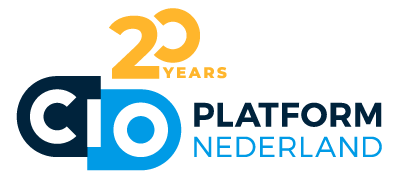Take care of an Enterprise Architect; How an Enterprise Architect unburdens and provides
Take care of an Enterprise Architect; How an Enterprise Architect unburdens and provides
 Monday 11 September 2023 16:17
Monday 11 September 2023 16:17 ''Great, Enterprise Architect! Probably interesting and important, but what do you actually do?'' For many people, it's a pretty abstract role, not always easy to place. Fortunately, I have my elevator pitch ready!
As CIO/IT organisations, we all have architects. "That makes sense", we think to ourselves. But that "logical" is far from true for everyone. Our CEO/CFO may however wonder what those architect costs are for anyway; what value is there in return. But other colleagues, both outside and inside the IT organisation, also have questions, more often than we might think, about when to involve an architect and how she/he can help. This blog provides colour and explanation on this topic in a very accessible way - a handy "must read" for everyone inside and outside the CIO organisation; of course, also for the CIO him/herself!
As Enterprise Architect, I am an advisor to management and monitor that, as a hospital, we have an ICT environment not only today - but also tomorrow and the day after tomorrow - that best supports our ambitions and is also manageable and affordable. Because as a hospital we have neither the capacity nor the ambition to develop ourselves, we source our solutions from the market. The challenge is in making the right choices, connecting all those components into one information landscape and making the best use of what you have.
As an architect, I am a guide in the multifaceted world of healthcare and healthcare ICT. To be a guide, you need to have a good understanding of what the world looks like at the moment and a clear picture of where we want to go. What kind of ICT do we need to continue providing good care in the future? What about laws and regulations, how do we engage with our partners, what can we expect from suppliers? There are many challenges and opportunities here.
What is certain is that healthcare faces a major challenge. The doubling of the ageing population means that demand for care is only increasing while supply - just because of the number of people who would have to work in care - is running into limits. The growth of healthcare spending as a percentage of gross domestic product - from 11% today to 18% in 2060 under unchanged policies - is also cause for concern.
Part of the solution to keeping care accessible and affordable must and can come from ICT. The Integral Care Agreement concluded last year focuses, among other things, on network care, with all the data exchange that this requires. It also focuses on eHealth solutions, with the motto "by yourself if you can, at home if you can, and digitally if you can". Furthermore, ICT can contribute to a working environment where healthcare providers can do what they are good at and what makes them happy and spend less time on administrative side issues.
But how does that translate into the architecture choices you make as a hospital? After years of laissez-faire, there is thankfully more national guidance with regard to healthcare ICT. Take, for instance, the Electronic Data Exchange in Healthcare Act, which was recently unanimously adopted by the House of Representatives. This framework legislation regulates that the central government can impose electronic exchange for certain data - e.g. medication records - including the standards to be used.
But there are still obstacles, such as well-intentioned privacy regulations that act as barriers in practice. A national patient consent facility has been in sight for years but is still not practically deployable. Last but not least, there are suppliers who really are making strides, but are still far from making systems between which data can flow freely without unnecessary barriers.
The fact that many things are still developing and that we as a hospital can only influence them to a limited extent means that there is not a fixed point on the horizon that we can work towards. But at the same time, this does not mean that we cannot do anything either. An important pillar of our architecture is the use of standards. For instance, the use of the Healthcare Information Building Blocks (ZIBs) for the structured recording of information and linkage standards such as FHIR, which helps in exchanging necessary information. So that also means avoiding new solutions that do not comply with these standards. Another pillar is reuse: with platform solutions that can be widely deployed, we ensure optimal use of money and scarce human resources - also within ICT - so that the solutions we have actually benefit as many healthcare providers and patients as possible.
Whether it is investing in the major systems, collaborating in the region, or realising new opportunities for one of our specialisms, in all these challenges and issues, it is important for me as an Enterprise Architect to be able to advise each time which choice - not only for now but also in the long term - is best for the hospital, for our patients and ultimately for Dutch healthcare. Very interesting and - even if I say so myself - quite important.
How do you see the (changing) role of the Enterprise Architect?
Mikis van Dijk
Enterprise Architect
Haaglanden Medisch Centrum
